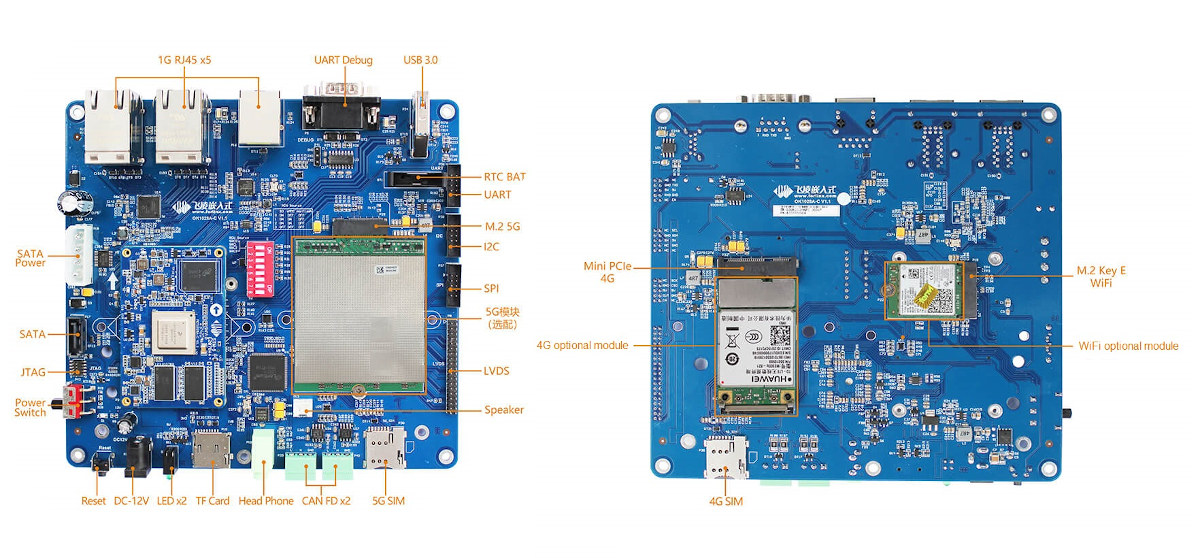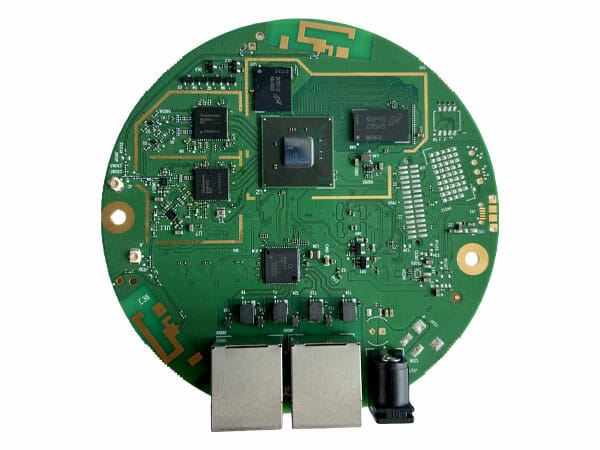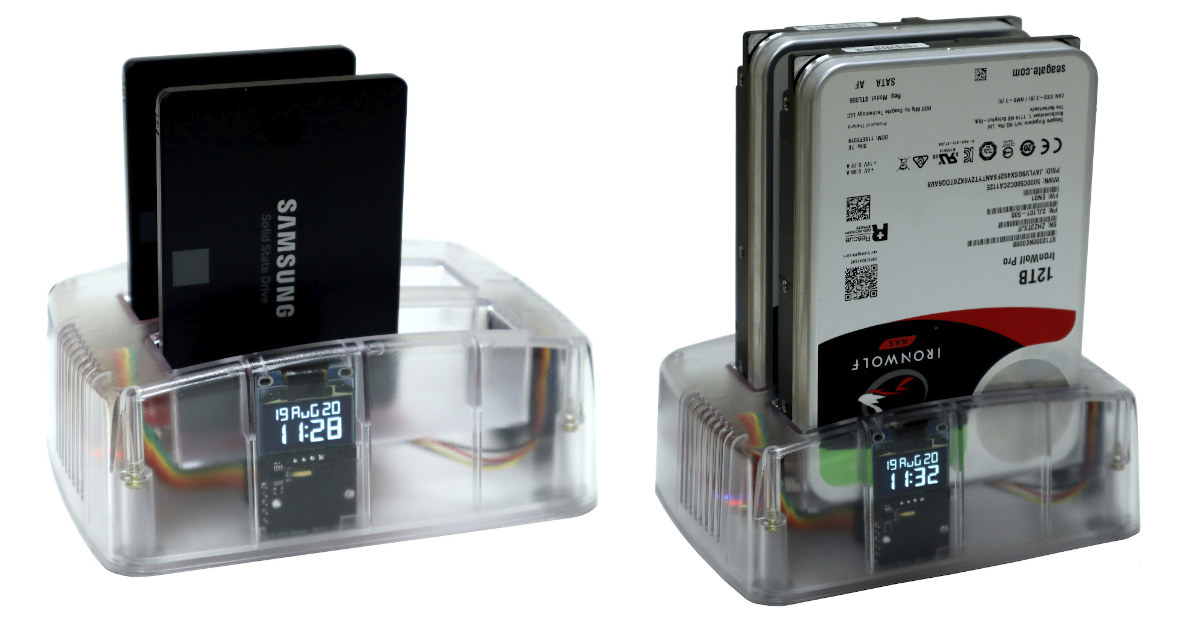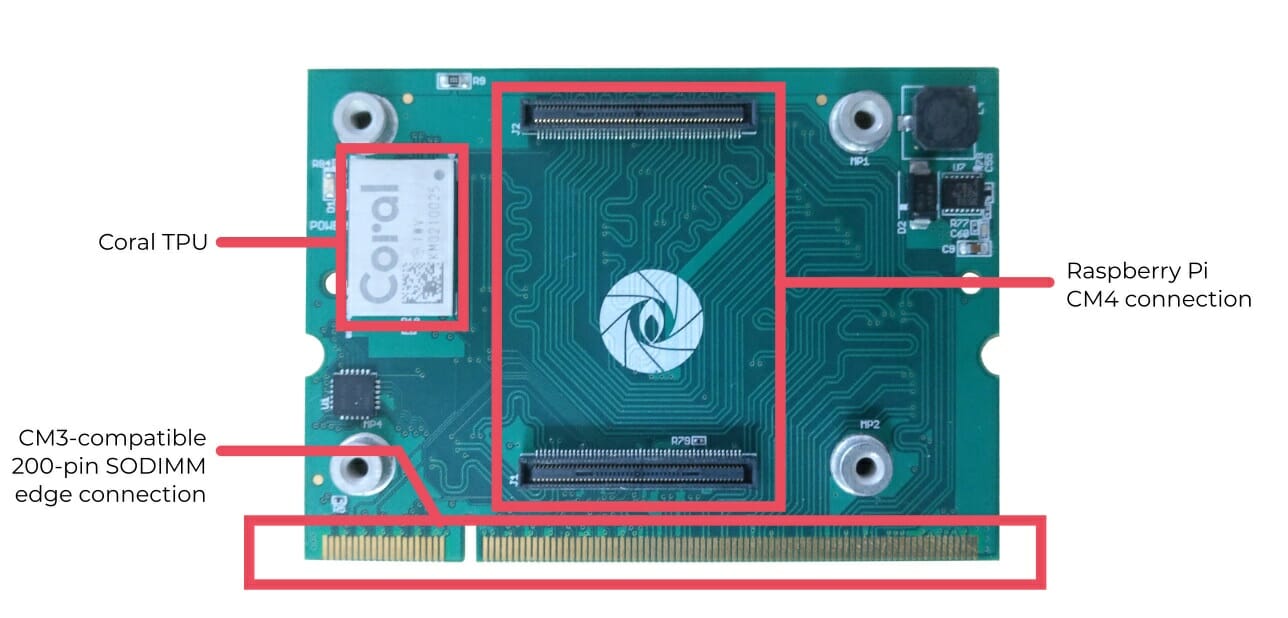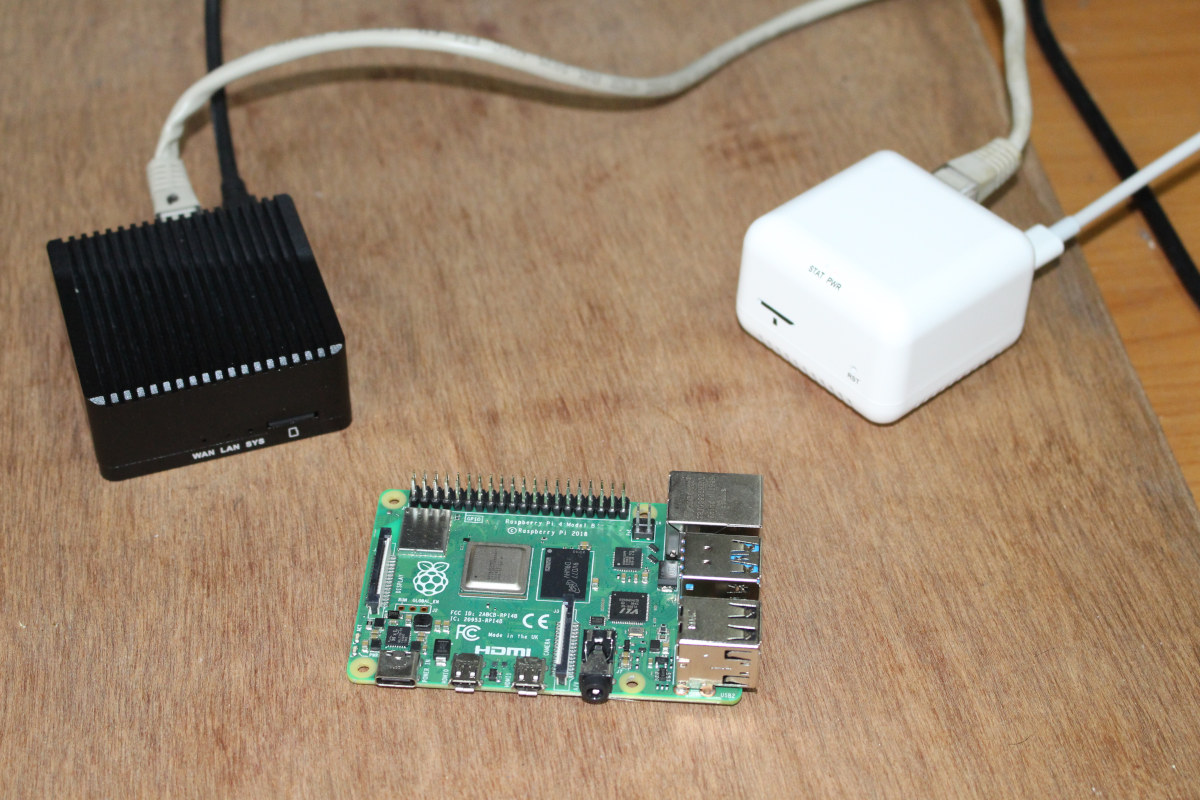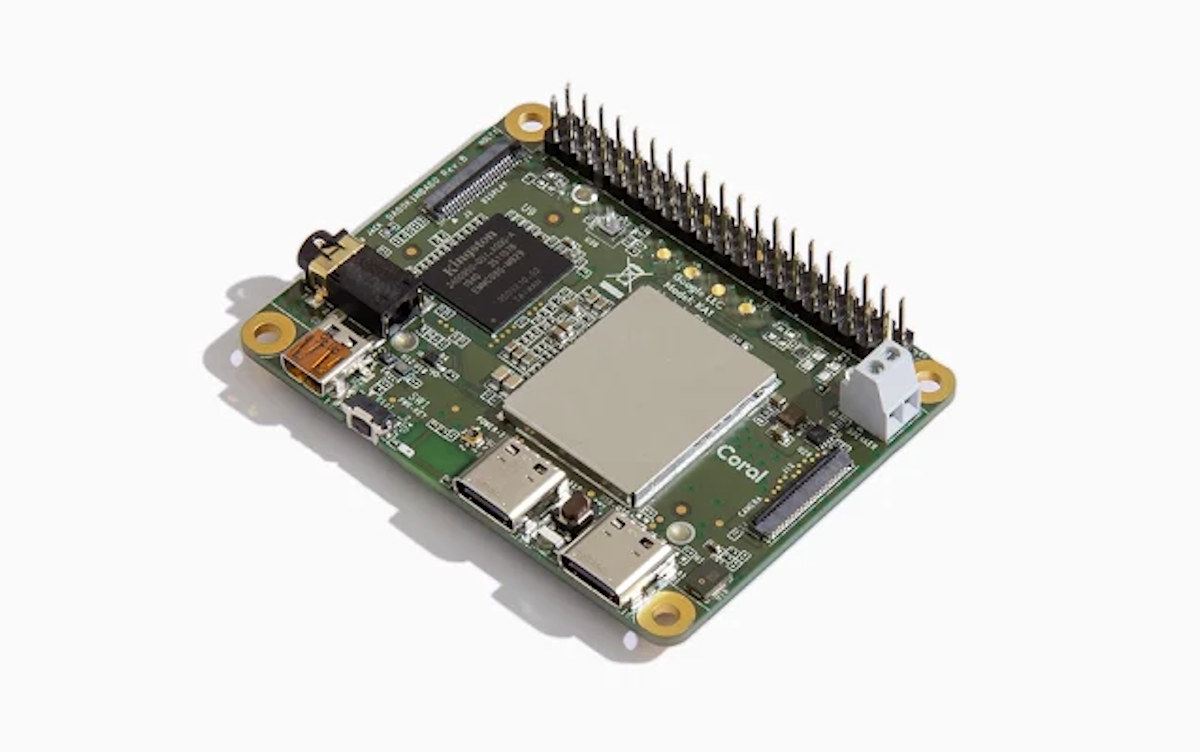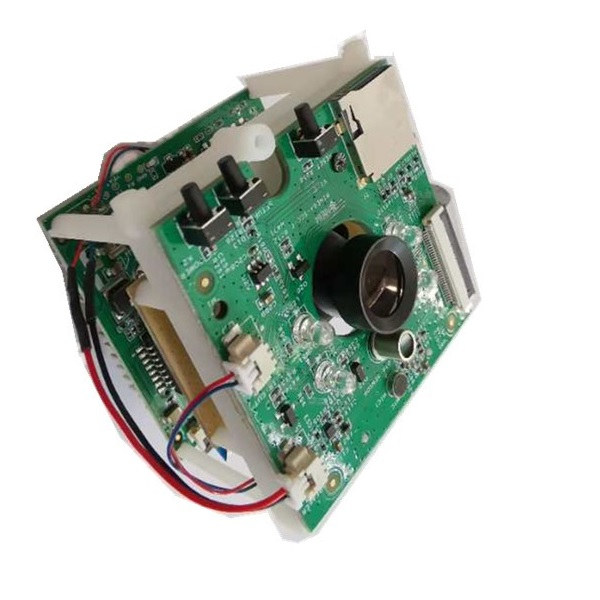CNXSoft: This is a guest post by Promwad that explains the basic steps to develop a video conferencing app with Gstreamer on TV boxes running Linux. The COVID-19 pandemic has become a catalyst for new online services. For example, Zoom became so successful that it overtook IBM in terms of capitalization this month. The software engineers at Promwad were inspired by this success and decided to go even further: what about implementing video conferencing on Smart TV and STBs? Then the users of such an application will have an opportunity to communicate not only at work but also to enjoy remote meetings with friends, cheer for a soccer team, watch a movie together, or do sports with a coach. For some reason, most digital TV operators do not have such a service, although, from an engineering point of view, all these features can be implemented on set-top boxes based on […]
Forlinx OK1028A-C networking SBC supports LVDS displays, 4G/5G modules
Forlinx released two networking SBC’s with 10Gbps Ethernet powered by NXP LS1043A and LS1046A processor nearly exactly one year ago. Like many other networking SBCs they do not come with video output so configuration is done via a computer or laptop either through a UART interface or a web interface. But in some cases, such boards may be integrated into machines that require a display for human-machine interaction. That’s why Forlinx has now released a new networking board – OK1028A-C – powered by NXP QorIQ Layerscape LS1028A dual-core Cortex-A72 processor that natively supports video output up to 4K UHD resolution via an eDP/DisplayPort interface which the company used to provide an LVDS header. The board also offers 5 Gigabit Ethernet ports, as well as optional WiFi, Bluetooth, and 4G or 5G cellular connectivity via M.2 and mPCIe modules. Forlinx OK1028A-C specifications: FET1028A-C system-on-module SoC – NXP LS1028A dual-core Cortex-A72 processor […]
Qualcomm IPQ6000 embedded SBC offers dual Gigabit Ethernet and WiFi 6 connectivity
At the beginning of the month, we covered Mango-DVK development kit based on a Qualcomm IPQ6000/IP6010 powered system-on-module enabling 2.5GbE and WiFi 6 connectivity. Wallys Communications contacted us earlier this week, about one of their new “802.11ax low-end product”, namely DR6000 SBC that happens to be based on Qualcomm IPQ6000 “CP03” reference design, and offers both WiFi 6 and dual Gigabit Ethernet connectivity in a round-shaped board. DR6000 / CP03 specifications: SoC – Qualcomm Atheros IPQ6000 quad-core Arm Cortex-A53 processor @ 1.2GHz processor System Memory – 512MB DDR3L Storage – 128MB Nand Flash, 16MB NOR flash Networking Wired – 2x Gigabit Ethernet RJ45 ports Wireless 2.4GHz 2×2 MU-MIMO OFDMA 802.11b/g/n/ax WiFi 6, up 573 Mbps, up to 20dBm per chain 5GHz 2×2 MU-MIMO OFDMA 802.11a/n/ac/ax WiFi 6, up to 1201 Mbps, up to 20dBm per chain 2x U.FL Connectors, diplexer allows dual band concurrent operation USB – 1x micro USB […]
ODROID-HC4 low-cost dual NAS comes with 4GB RAM, supports 2.5-inch and 3.5-inch SATA drives
[Edit: Hardkernel has now updated their documentation to clarify the NAS uses ASM1061 PCIe to SATA controller instead of JMB582] It’s hard to find low-cost NAS platforms often because of the mechanism to insert drives and the enclosure add to the cost. An alternative is to use boards like Hardkernel ODROID-HC1 for 2.5-inch drives or ODROID-HC2 for 2.5- and 3.5-inch drives, but each board supports only one drive. The designs are stackable, but you’d need one Linux board per drive, so it’s not ideal. The Korean company has now launched a new model with ODROID-HC4 powered by an Amlogic S905X3 processor and shipping with a case supporting two 2.5-inch or 3.5-inch SATA drives that will start selling later this month for just $65 and up. ODROID-HC4 specifications: SoC – Amlogic S905X3 quad-core Cortex-A55 processor @ 1.8 GHz with Mali-G31 MP2 GPU System Memory – 4GB DDR4 Storage 128 Mbit SPI […]
Gumstix Introduces CM4 to CM3 Adapter, Carrier Boards for Raspberry Pi Compute Module 4
Raspberry Pi Trading has just launched 32 different models of Raspberry Pi CM4 and CM4Lite systems-on-module, as well as the “IO board” carrier board. But the company has also worked with third-parties, and Gumstix, an Altium company, has unveiled four different carrier boards for the Raspberry Pi Compute Module 4, as well as a convenient CM4 to CM3 adapter board that enables the use of Raspberry Pi CM4 on all/most carrier boards for the Compute Module 3/3+. Raspberry Pi CM4 Uprev & UprevAI CM3 adapter board Gumstix Raspberry Pi CM4 Uprev follows the Raspberry Pi Compute Module 3 form factor but includes two Hirose connectors for Computer Module 4. The signals are simply routed from the Hirose connectors to the 200-pin SODIMM edge connector used with CM3. Gumstix Raspberry Pi CM4 Uprev is the same except it adds a Google Coral accelerator module. Gumstix Raspberry Pi CM4 Development Board Specifications: […]
NanoPi R2S & NanoPi NEO3 tested with Armbian – Thermal test, Ethernet and USB performance
In the first part of the review of NanoPi NEO3 and Nano R2S I checked out the hardware, with both tiny gateways powered by a Rockchip RK3328 processor but a different features as NEO3 includes a Gigabit Ethernet port and a USB 3.0 port, while R2S comes with dual Gigabit Ethernet ports and a USB 2.0 port. I’ve now had time to test both gateways using Armbian 20.08.1 release based on Ubuntu 20.04 Focal. Note that while NanoPi R2S is officially supported by Armbian, NanoPi NEO3 images are currently tagged as “suitable for testing“. Having that said I did not come across any specific issues on NEO3, and it may mostly mean it’s easier to get support on the forums with R2S. I flashed two microSD cards using USBImager with: Armbian_20.08.1_Nanopi-r2s_focal_current_5.8.6_minimal.img.xz Armbian_20.08.1_Nanopineo3_focal_current_5.8.6_minimal.img.xz That means Ubuntu 20.04 with Linux 5.8.6, but since Armbian is always updated, I ended the review with […]
Google Coral Dev Board mini SBC is now available for $100
Google Coral SBC was the first development board with Google Edge TPU. The AI accelerator was combined with an NXP i.MX 8M quad-core Arm Cortex-A53 processor and 1GB RAM to provide an all-in-all AI edge computing platform. It launched for $175, and now still retails for $160 which may not be affordable to students and hobbyists. Google announced a new model called Coral Dev Board Mini last January, and the good news is that the board is now available for pre-order for just under $100 on Seeed Studio with shipping scheduled to start by the end of the month. Coral Dev Board Mini specifications haven’t changed much since the original announcement, but we know a few more details: SoC – MediaTek MT8167S quad-core Arm Cortex-A35 processor @ 1.3 GHz with Imagination PowerVR GE8300 GPU AI/ML accelerator – Google Edge TPU coprocessor with up to 4 TOPS as part of Coral […]
PineCube open-source Linux IP camera devkit launched for $30
Pine64 has been a busy company/community with the launch of Linux powered Arm development boards, PinePhone smartphone, PineTab tablet, and Pinebook Pro laptop in the last two years. They also had other smaller projects that got fewer resources due to the launch of the aforementioned products and COVID-19 induced delays, and one of those is PineCube open-source IP camera development kit that finally launched for $29.99 plus shipping. PineCube hardware specifications: SoC – Allwinner/Sochip S3 Arm Cortex-A7 processor @ 800MHz with 128MB in-package DDR3 RAM Storage – 128Mbit SPI Nor Flash and MicroSD slot, both bootable Camera – 5MP OV5640 sensor Audio – Built-in microphone, speaker Display – Optional 4.5-inch RGB LCD screen ( Networking – 10/100M Ethernet with passive PoE and WiFi USB – USB 2.0 Type-A host port Expansion – 26-pin GPIO header Misc – Volume and home buttons Power Supply 5V/1A via micro USB port or GPIO […]



